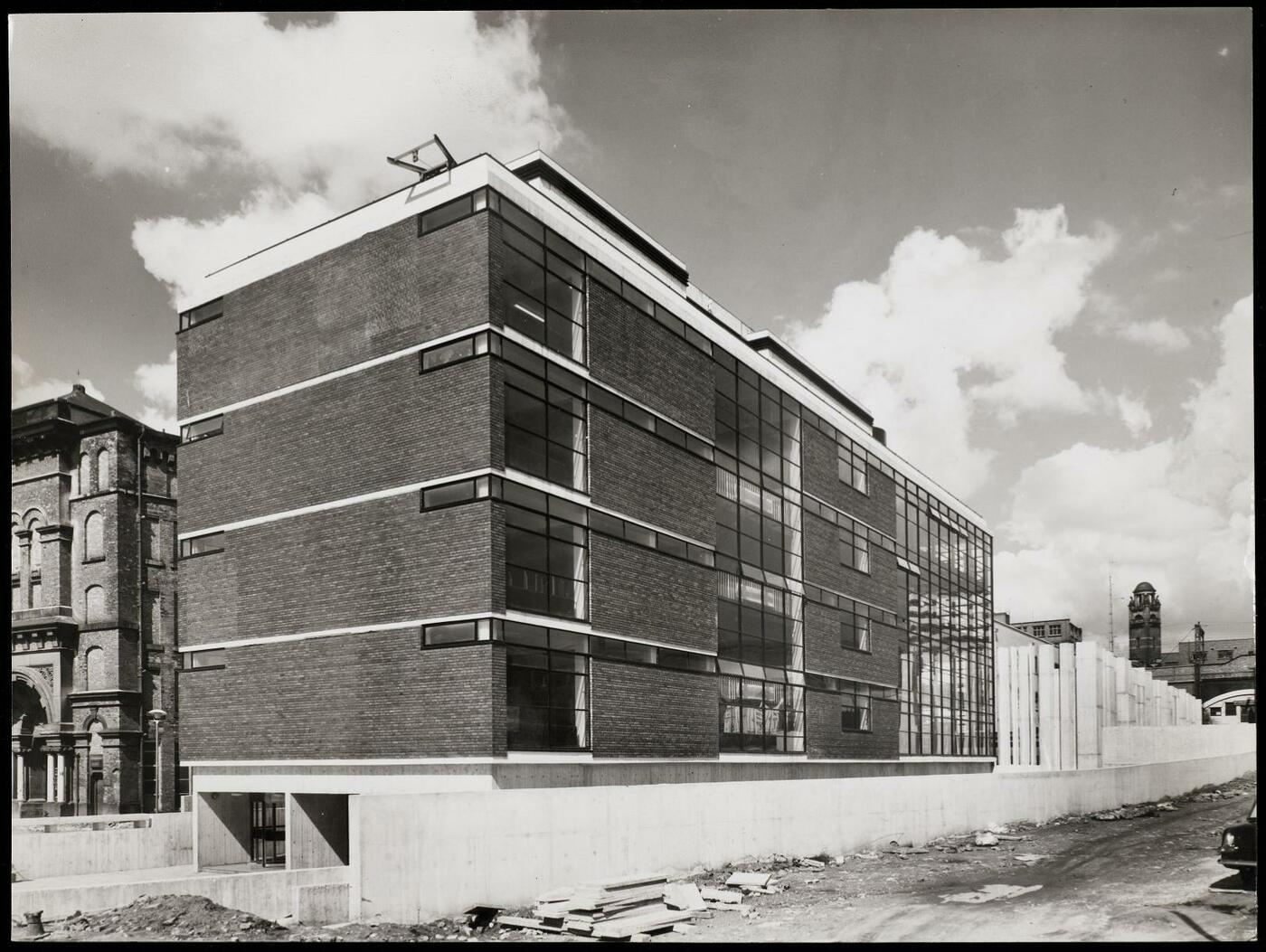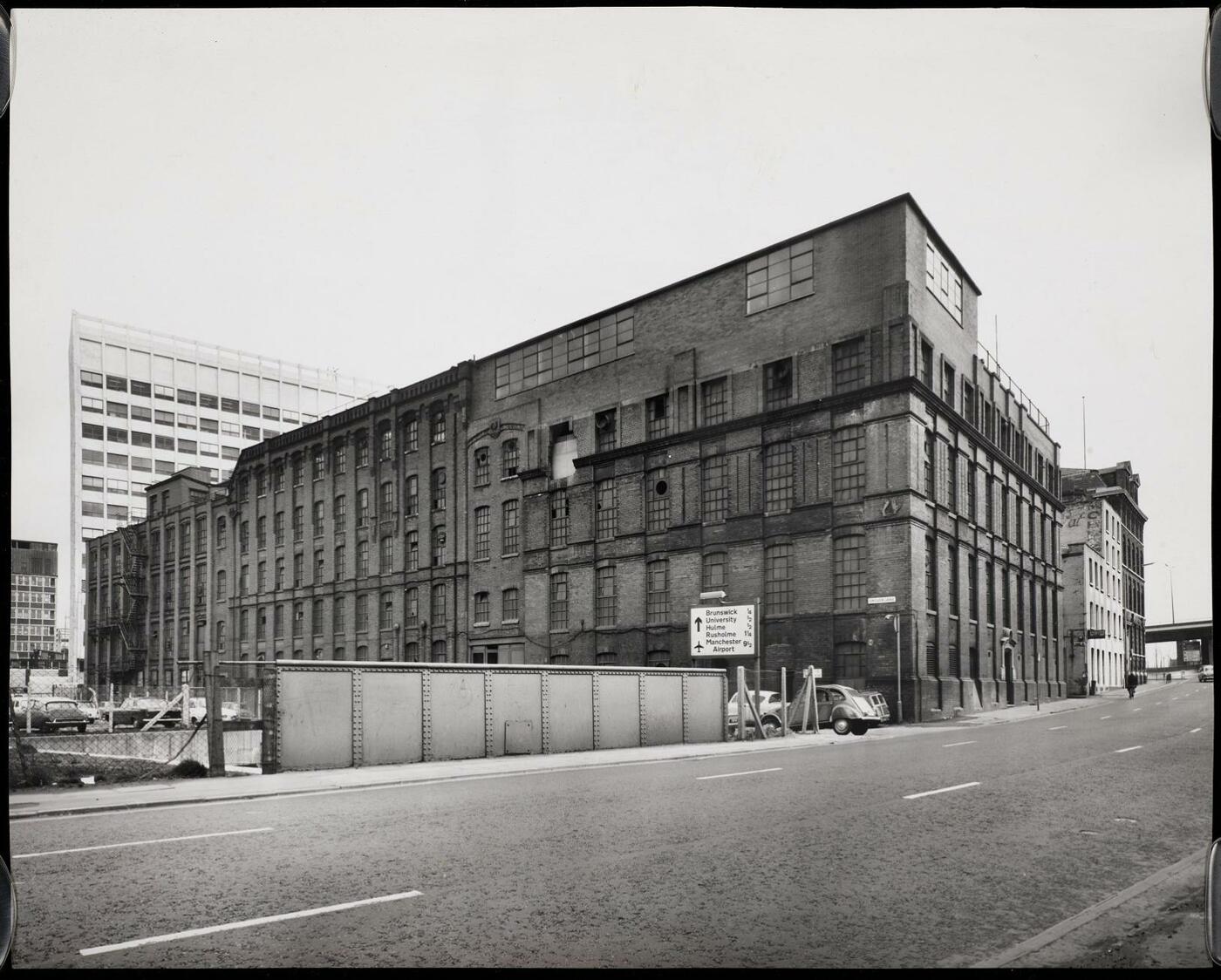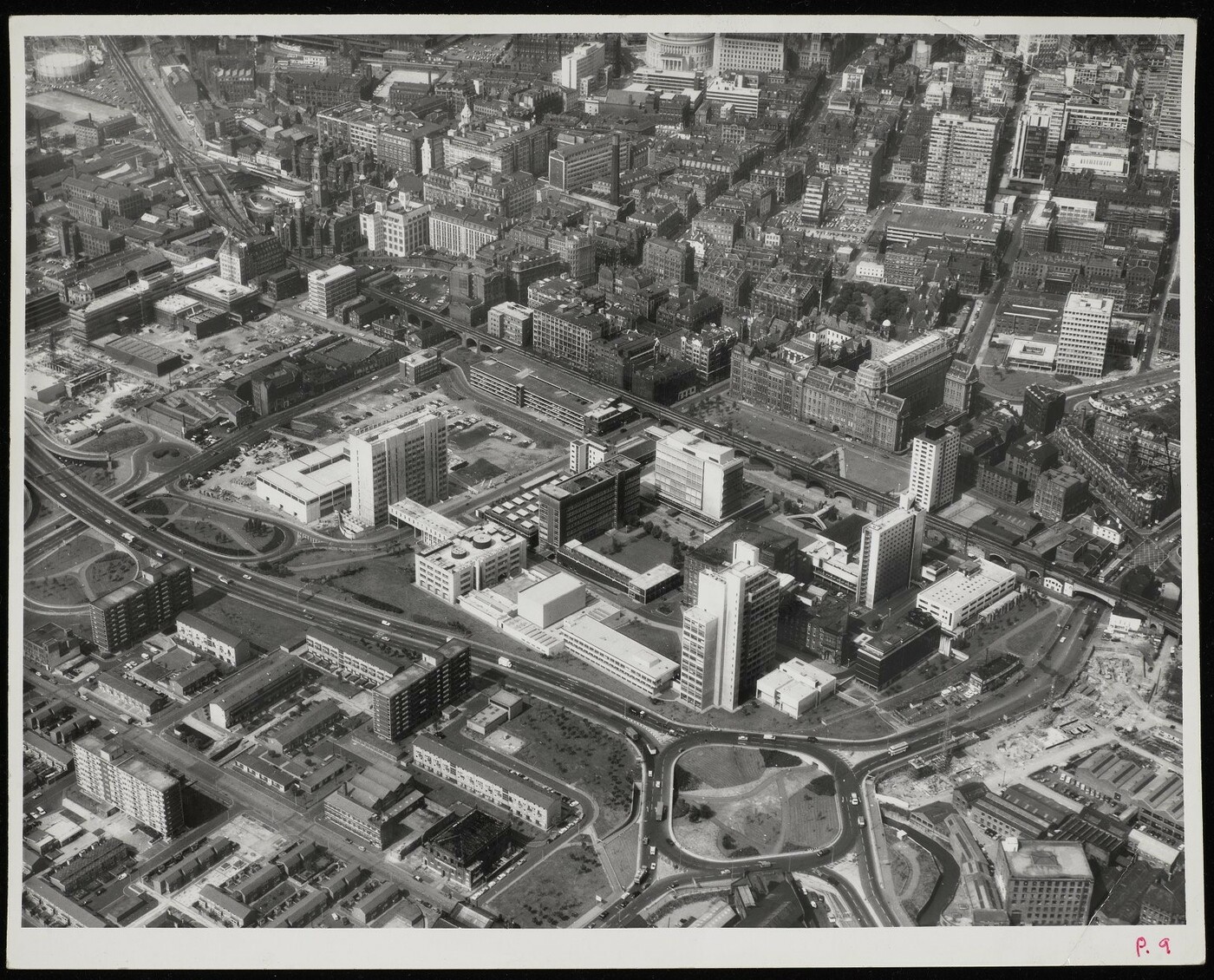End of the redevelopment
From the mid-1970s, universities focussed on making the best of available resources rather than expanding their estate. Severe financial constraints meant that no major building work was undertaken at UMIST until Weston Hall was constructed in 1991 (extended in 2000). Built in light coloured brick with pitched roofs, this modest building stood in stark contrast to the self-confident towers of UMIST's ‘brutalist’ era. It is therefore fitting to see the 1974 Begg building as the end of UMIST’s ‘modernist moment’.
Plans to build a new chemical engineering building were shelved in the mid-1960s on cost grounds. The Chemical Engineering Pilot Plant, which was adjacent to the Mill, was built for the Department's local and complex processing equipment. The building was later renamed the Morton building after Professor Frank Morton, a former head of the department.
The building, designed by Fairhursts, is a three storey construction of engineering brick at its southern end and a glazed section at the northern end, which exposed machinery and equipment to public view (from the London Road). The building is believed to be one of the first to use colour-coded plant to designate different types of utility services. It opened in 1966.
To the building’s immediate north was the Moffat building, a former confectionary warehouse. This housed UMIST's Estates department, and later the Department of Optometry. Adjoining Moffat was the Hollaway wall, composed of large sculptural blocks of concrete in a distinctively abstract style. This is currently the only part of the UMIST redevelopment to enjoy listed building status.
The section of Area B which faced Princess St remained undeveloped for even longer. The photograph shows the disused Dunlop building, shortly before demolition. It was not until the early 2000s that the Biosciences (John Garside) building was constructed at this site, reflecting UMIST’s greater involvement with life sciences. This remains part of the University.
UMIST continued to develop on a more modest scale in the area between the two universities – the Grosvenor halls of residence and the Material Sciences building were added in the 1970s (both since demolished).
By early 1970s UMIST had created a compact but distinctive campus in an inner city area. Constrained by limited space, the new buildings have been praised for their “sense of purpose”, blending the utilitarian and idealistic aspects of the UMIST vision.
Buildings were designed to meet the needs and ambitions of the departments which occupied them, but were usually also flexible enough to meet the evolving requirements of their academic occupants.
The UMIST campus influenced some of the College of Advanced Technologies which achieved university status in the late 1960s. These too usually had an inner urban setting and were built around an existing technical school/college. UMIST provided a guide to building successfully in constrained urban spaces, which became a more realistic option than the spacious sites enjoyed by the new 'greenfield' universities of the early 1960s.



